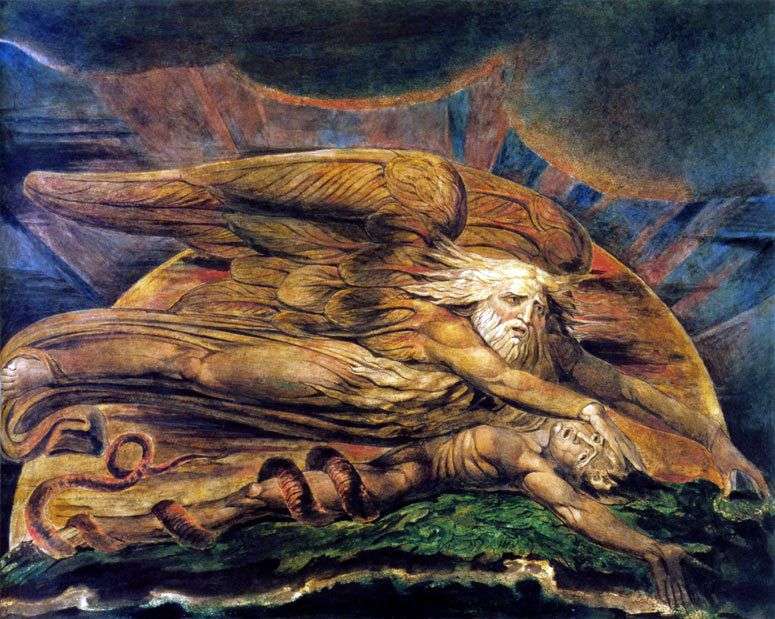
This is one of the “large flower beds” Blake, a series of which he created around 1795. Some researchers prefer to call them “painted engravings” – in order to separate them from ordinary engravings.
This division is legitimate, because each of the “large color engravings” Blake painted manually and, therefore, unique, and conventional color prints can be published in any large number of copies. Working on his engravings, the artist first drew a composition on a solid sheet of cardboard, and then printed a picture on a sheet of paper, pressing it to the cardboard with his hands or with the help of a press. From one cardboard it was possible to make no more than three prints, and the print “Elohim creates Adam” is generally known only in one copy.
The printing technique from cardboard probably attracted Blake with some “texture features”, because it is strange to imagine that he decided to reproduce his works in such an inefficient way – in the latter case it would be much more appropriate to work in the technique of traditional engraving. The impression “Elohim creates Adam” is sometimes called “The Lord creates Adam,” but Blake insisted on using here one of the Hebrew names of God – “Elohim”, as it is in the Book of Genesis.
The plot of the engraving is very similar to the Michelangelo’s Creation of Adam, which adorns the vault of the Sistine Chapel. But the mood for these two works are completely different. If in Michelangelo God presents Adam life, as the most precious gift, then Elohim Blake pulls the first man out of the infinity of spiritual existence and condemns him to vegetation in the material world.
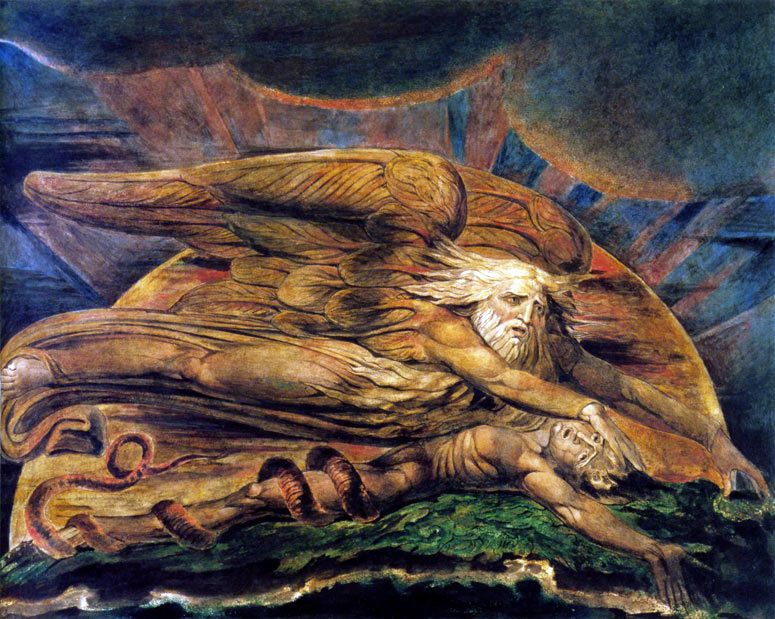 Elohim crée Adam – William Blake
Elohim crée Adam – William Blake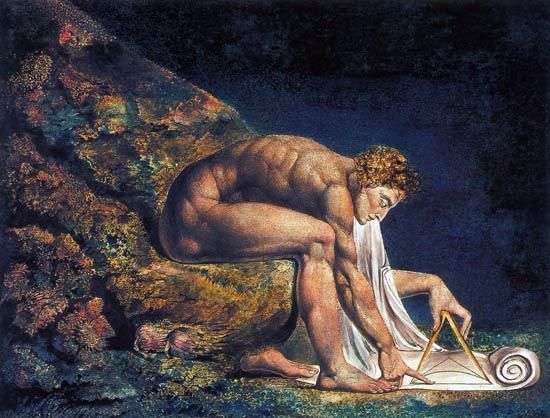 Newton by William Blake
Newton by William Blake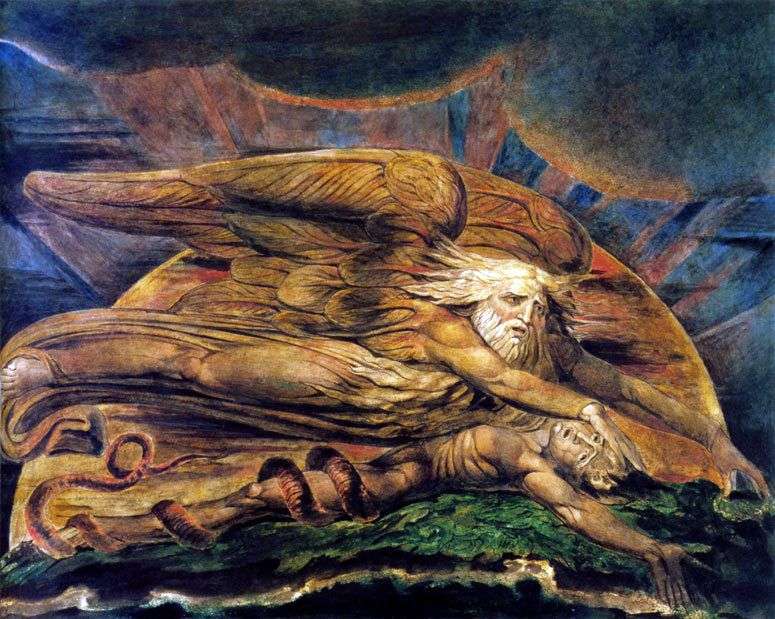 Elohim crea a Adán – William Blake
Elohim crea a Adán – William Blake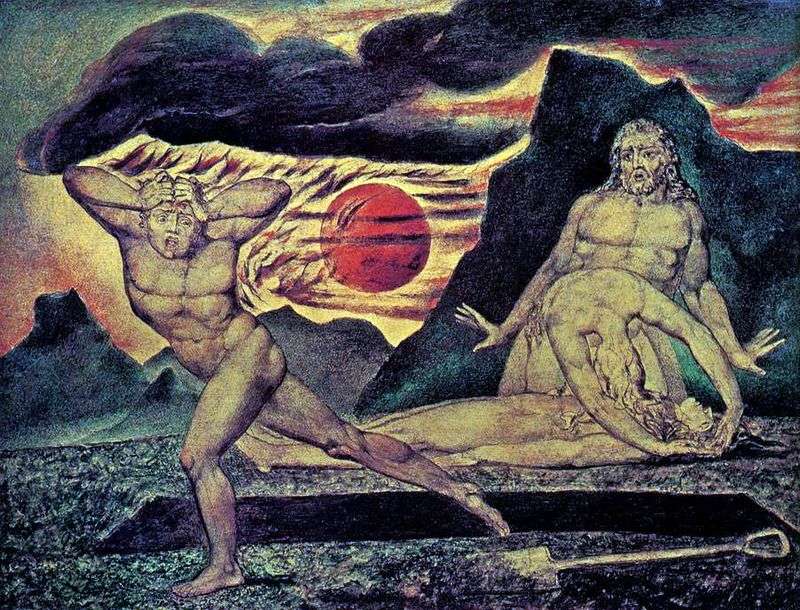 Adam and Eve find the body of Abel by William Blake
Adam and Eve find the body of Abel by William Blake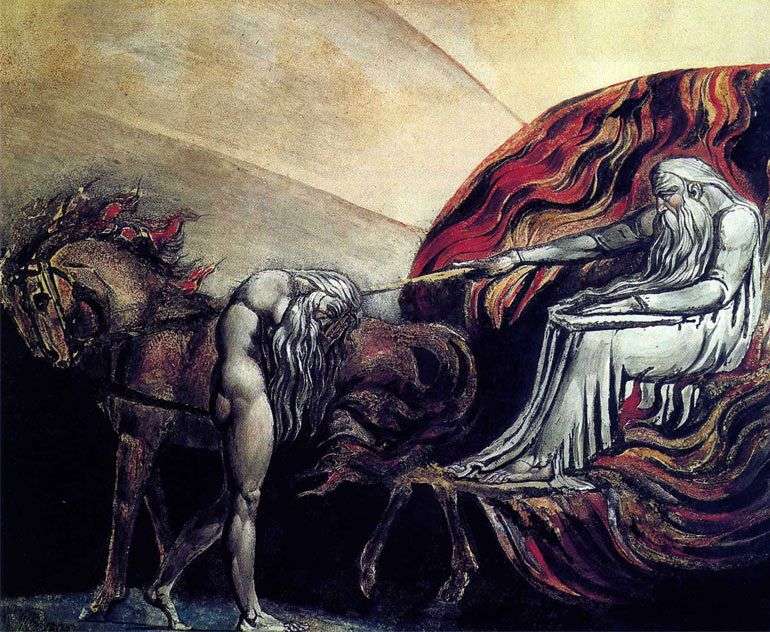 Adam before the court of God by Ulam Blake
Adam before the court of God by Ulam Blake The Risen Christ by William Blake
The Risen Christ by William Blake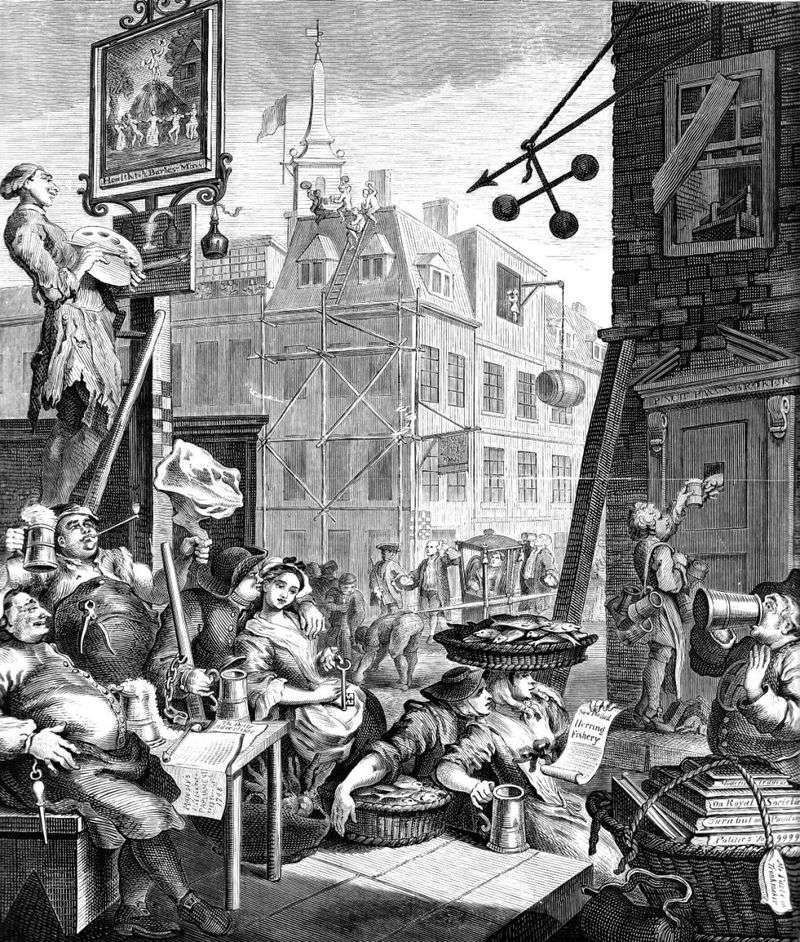 Piva Street by William Hogarth
Piva Street by William Hogarth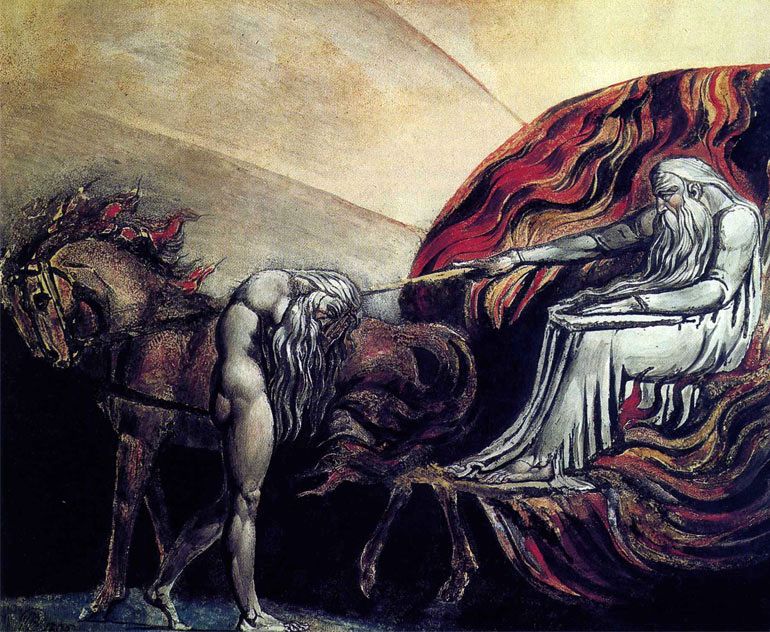 Adam devant le jugement de Dieu – William Blake
Adam devant le jugement de Dieu – William Blake